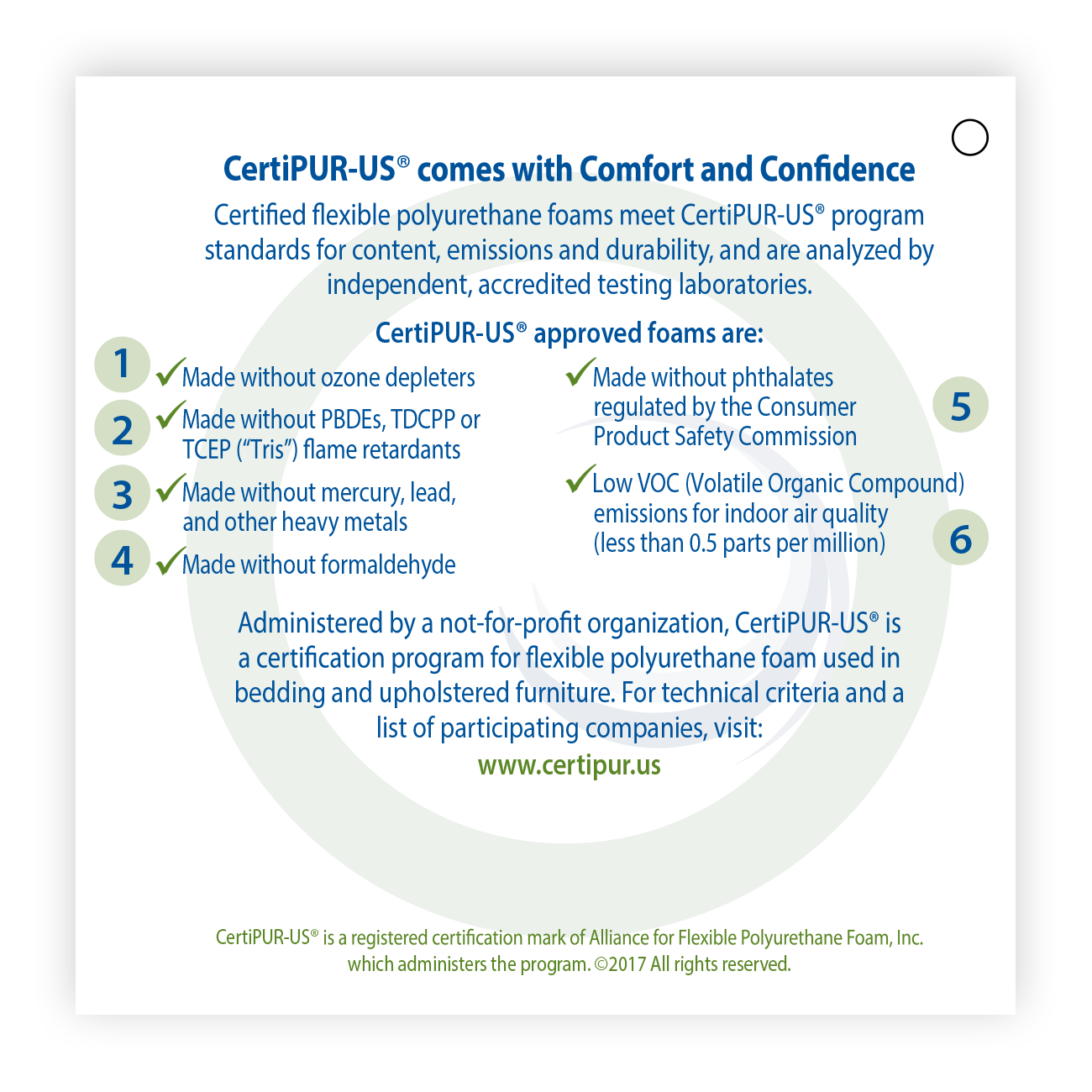CertiPUR-US
Home » CertiPUR-US
Home » CertiPUR-US

www.certipur.us
All CertiPUR-US® testing is conducted by independent, internationally accredited laboratories.
CertiPUR-US® is a program of the Alliance for Flexible Polyurethane Foam, Inc.
*ISO is one of the largest voluntary standards development organizations in the world, and is a trusted source for technical standards for materials, products, systems, and services. Known for their high technical quality and market relevancy, ISO standards have an important role in the technical infrastructure that guides design, manufacturing and trade in the global economy.

© Copyright Endless Comfort Bedding | Vaughan Website Design by Platinum Design